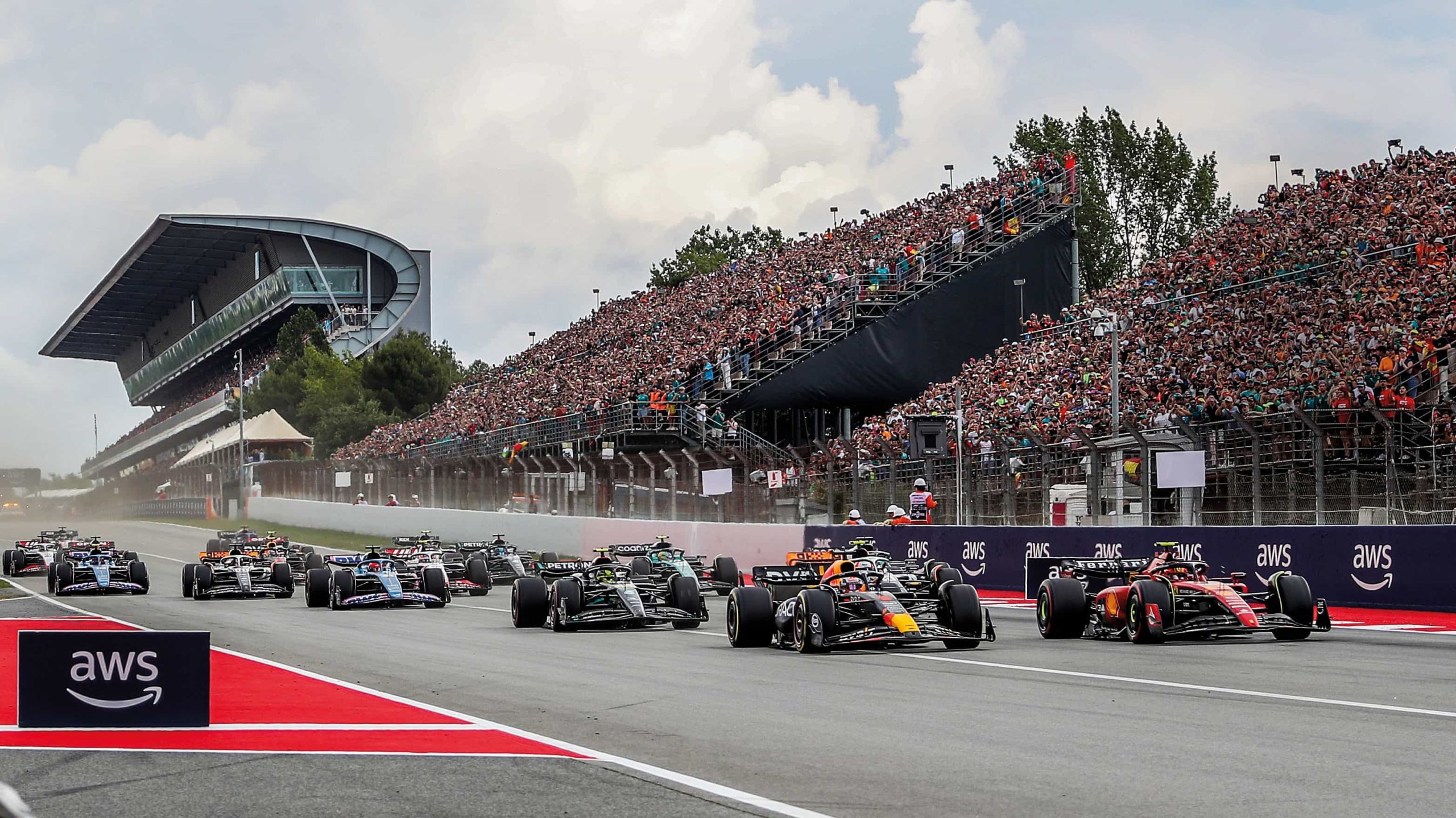Red Bull keeps rivals guessing with ‘troubling’ tyre strategies at Spanish GP
Red Bull played its tyre strategy safe in Spain, but gave nothing away on whether it would run a one-stop, two-stop or even three-stop strategy, says Mark Hughes

With Verstappen’s tyre choice largely irrelevant given he was on a different planet, what Pérez did was watched closely
Getty Images
When the tyre blankets came off on the grid in Spain, almost the whole field had opted for the red-striped C3 soft as their starting tyre. But both Red Bulls – Max Verstappen on pole and Sergio Pérez in the 11th place slot – were on the C2 mediums. There were several unknown variables feeding into everyone’s choices. The layout of this track has always imposed heavy tyre degradation (particularly of the left-front) but that has been made more severe through the by-passing of the slow chicane at the end of the lap, making for a long and very fast seventh-gear final turn.
Such a high level of tyre degradation seemed to take the one-stop strategy off the table, whereas with the old layout it had always been feasible, albeit it with two-stop more often favoured. With everyone assumed to be two-stopping, because the 66 laps would definitely have to be divided up into at least three stints, there was no particular strategic risk in starting on the soft. Whenever teams want to retain the one-stopping option, using the softs to start is always risky because there is no sure way of knowing if they will remain competitive long enough to meet the stint length required. But with the one-stop judged to be unfeasible, almost everyone preferred to take the startline and first lap performance benefit of starting on the soft, knowing the stints would be short.
Verstappen’s tyre choice was almost irrelevant; so big was his pace advantage he could have won using virtually any strategy. But that choice of mediums for Pérez was a troubling one for Mercedes, Ferrari and Aston; it implied Red Bull might be able to one-stop. The careful way he ran the early stages tended to support this view. Russell, by contrast, from a place behind Pérez was immediately past him and aggressively making further places early.
“The hards just felt like a worse medium and made things trickier”
Russell in his soft-tyred first stint pitted from 7sec in front of the medium-tyred Pérez, who stayed out an extra two laps and rejoined 11sec behind. The Mercedes was now on mediums, the Red Bull on hards. Mercedes at this stage believed Pérez may have been trying to one-stop and so instructed Russell to push, to try to get the pit stop’s-worth of gap over Pérez so he could retain the position after his second stop. It was soon obvious he didn’t have the pace to do that while keeping his tyres in shape. He had the gap at 12sec by lap 32, but thereafter Pérez was a few tenths faster. By lap 39 the gap was 8sec. If Pérez was indeed one-stopping, Russell would be well-beaten for what was shaping up into being third place. Only if Pérez – like Russell – needed to stop again would Russell be in with a chance of a podium.
Things began looking up for Russell when Mercedes observed that Valtteri Bottas’ Alfa – which had been on the hards since lap five – was suffering severe tyre deg and dropping whole seconds per lap, forcing him to pit. That was lap 39, meaning Bottas’ hards had lasted only 34 laps. With 27 laps still to go would Pérez be able to get to the end on hards which had already done 12 laps? Russell was brought in from 7sec ahead of the Red Bull on lap 45. Five laps later, and much to Merc’s relief, Pérez made his second stop. Russell and Pérez were 3sec apart in third and fourth at the end.
Given that he’d two-stopped, Pérez’s stint on the hards had not been remarkable, no faster than Russell’s. A hard-shod Red Bull might have been expected to be faster than a medium-shod Mercedes, as the hard was expected to be a better race tyre. Verstappen, untroubled in the lead, had also taken the hard for his second stint – and didn’t like it. “It just felt like a worse medium,” he reported. “It made the car trickier to drive but its deg seemed no better.” Mercedes had avoided this tyre, mainly on Hamilton’s feedback from practice. Both Russell and Hamilton ran long enough middle stints on their mediums that they could get back onto the soft. This combination of soft/medium/soft seemed better than Red Bull’s medium/hard/soft.
As such, Verstappen’s winning margin of 23sec over Hamilton undersold the Red Bull’s true advantage and flattered Mercedes. Starting on the medium seemed a conservative choice for Red Bull if it was always planning to two-stop, or a bold one if it thought it might one-stop. Turns out its concern was the possibility of a three-stop. “It was conservative,” said Christian Horner. “We were concerned that the soft would degrade and could put you on the cusp of a three-stop. So we felt this would give them a longer range to use the pace of the car.”
